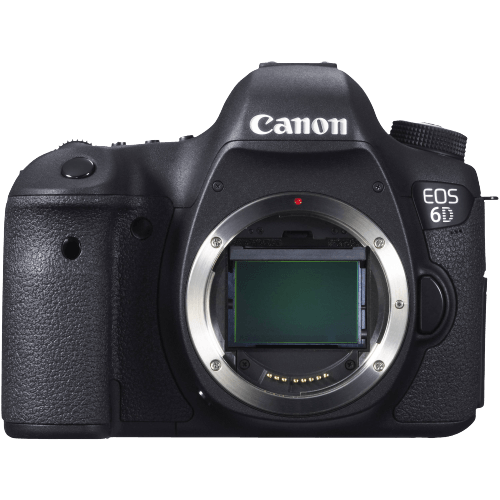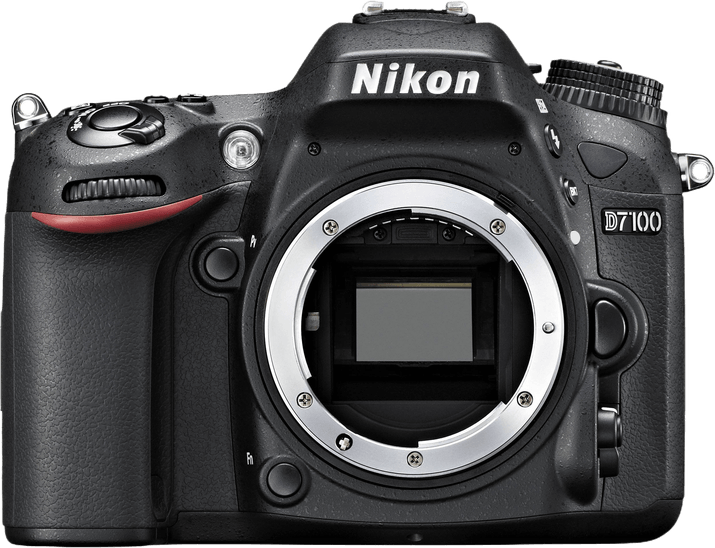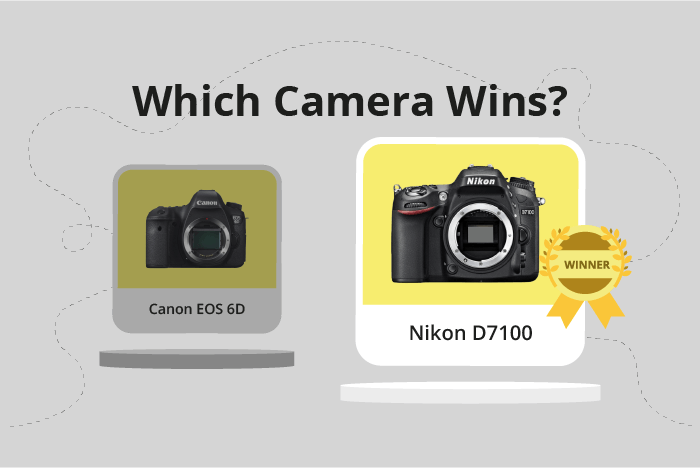Canon EOS 6D vs Nikon D7100 Comparison
Canon EOS 6D

Nikon D7100

The Nikon D7100 outperforms the Canon EOS 6D with a score of 65/100 compared to 59/100. Both cameras are DSLR models released in 2012 and 2013, respectively, and share similar dimensions and weight. The Canon EOS 6D, however, is more expensive with a launch price of $2099 compared to the Nikon D7100’s $1200.
The Nikon D7100 earns its higher score with better overall performance and a more affordable price. On the other hand, the Canon EOS 6D offers some advantages with its slightly larger size, which may provide a better grip for some users.
Considering their scores, performance, and prices, the Nikon D7100 is the better choice for most users, while the Canon EOS 6D could be preferred by those seeking a larger camera body.
Canon EOS 6D vs Nikon D7100 Overview and Optics
The Nikon D7100 outperforms the Canon EOS 6D in optics with a score of 67/100 compared to the Canon’s 61/100. Both cameras share some common specifications, including a CMOS sensor, a lack of image stabilization, and similar processors – the Canon 6D has a Digic 5+ processor while the Nikon D7100 has an Expeed 3 processor.
The Nikon D7100 boasts superior specs in certain areas, such as a higher megapixel count of 24.1 compared to the Canon 6D’s 20.2. Additionally, the Nikon D7100 has a faster shooting speed at 6 frames per second, compared to the Canon 6D’s 4.5 frames per second. The DXOMARK score for the Nikon D7100’s sensor is slightly better at 83, compared to the Canon 6D’s score of 82.
The Canon EOS 6D does have some advantages, including a larger full-frame sensor compared to the Nikon D7100’s APS-C sensor. Furthermore, the Canon 6D has a Canon EF lens mount, which offers a wider variety of lenses compared to the Nikon F DX lens mount of the D7100.
Taking into consideration each camera’s strengths and weaknesses, it is clear that the Nikon D7100 offers better optics performance due to its higher megapixel count, faster shooting speed, and slightly better sensor score. However, the Canon 6D’s larger sensor and broader lens compatibility may be appealing to some users. Ultimately, the choice between these two cameras boils down to individual preferences and priorities in terms of camera optics.
Canon EOS 6D vs Nikon D7100 Video Performance
The Nikon D7100 emerges as the winner in video capabilities with a score of 57 out of 100, while the Canon EOS 6D trails behind with a score of 43. Both cameras feature Full HD video resolution with maximum video dimensions of 1920 x 1080 and a frame rate of 30fps. These common specifications ensure that both cameras produce high-quality videos.
The Nikon D7100’s higher score indicates its superior video capabilities. One such advantage is its built-in time-lapse functionality, allowing users to create stunning time-lapse videos without the need for additional equipment or software. This feature sets the Nikon D7100 apart from the Canon EOS 6D, which lacks this function.
On the other hand, the Canon EOS 6D does not display any significant advantages in video capabilities over the Nikon D7100. Both cameras share similar specifications, with the only major difference being the D7100’s built-in time-lapse functionality. Nevertheless, the EOS 6D remains a strong contender in the field of photography, but its video performance is not as impressive as the D7100’s.
The Nikon D7100’s superior video capabilities, along with its built-in time-lapse functionality, make it a more appealing option for users looking to capture high-quality videos. Meanwhile, the Canon EOS 6D falls short in this aspect and may not be the best choice for those prioritizing video performance. Ultimately, the choice between these two cameras depends on the user’s specific needs and preferences, but the Nikon D7100 holds a clear advantage in the realm of video capabilities.
Canon EOS 6D vs Nikon D7100 Features and Benefits
The Nikon D7100 outperforms the Canon EOS 6D in features with a score of 59/100, compared to the Canon’s 57/100. Both cameras share some common specifications, such as screen size, with the Canon having a 3-inch screen and the Nikon featuring a slightly larger 3.2-inch screen. Neither camera has a touchscreen or flip screen. Both cameras have WIFI capabilities, but neither has Bluetooth.
The Nikon D7100’s superior features include a higher screen resolution of 1,228,800 dots, compared to the Canon EOS 6D’s 1,040,000 dots. This means that the Nikon’s screen displays images with more clarity and detail. However, the Canon EOS 6D has one advantage over the Nikon D7100: it has GPS functionality, allowing users to geotag their photos and track shooting locations, while the Nikon D7100 lacks this feature.
Despite the Nikon D7100’s higher feature score, the Canon EOS 6D’s GPS functionality might be more valuable to some photographers, especially those who travel frequently or work in the field. On the other hand, the Nikon D7100’s higher screen resolution provides users with a better overall viewing experience.
To determine which camera is better suited to individual needs, photographers should consider their specific requirements and preferences. The Nikon D7100’s superior screen resolution may be more important to those who prioritize image clarity, while the Canon EOS 6D’s GPS functionality could be essential for photographers who need to track and document their shooting locations.
Canon EOS 6D vs Nikon D7100 Storage and Battery
The Nikon D7100 outperforms the Canon EOS 6D in storage and battery with a score of 76 out of 100, compared to the 6D’s 45 points. Both cameras accept SD, SDHC, and SDXC memory cards and neither offer USB charging. However, there are noteworthy differences between the two models.
The D7100 surpasses the 6D with its two memory card slots, providing increased storage capacity and flexibility for photographers. Additionally, the D7100 uses the EN-EL15 battery, which allows for 950 shots per charge. In contrast, the 6D has only one memory card slot, which may limit storage options for users.
Despite its lower score, the Canon EOS 6D does have an advantage in battery life. Its LP-E6 battery provides 1090 shots per charge, 140 shots more than the D7100. This longer battery life may be beneficial for photographers who require extended shooting periods.
Taking these factors into account, the Nikon D7100 excels in storage capacity due to its dual memory card slots, while the Canon EOS 6D offers a longer-lasting battery. Depending on individual preferences and requirements, photographers may prioritize either storage or battery life in their decision-making process.
Canon EOS 6D vs Nikon D7100 – Our Verdict
Are you still undecided about which camera is right for you? Have a look at these popular comparisons that feature the Canon EOS 6D or the Nikon D7100:

